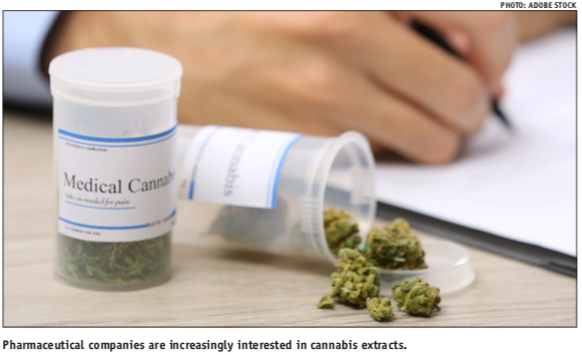Medicinal cannabis: all smoke?
Are claims about medicinal cannabis backed by research?

Legislation now before Parliament proposes to increase access to medicinal cannabis and place quality and safety standards on cannabis preparations.1 Many therapeutic claims are made for cannabis — managing chronic pain, chemotherapy-induced nausea and vomiting (CINV), epilepsy, cancer, spasticity due to multiple sclerosis (MS), addiction, and post-traumatic stress disorder (PTSD).2 Cannabis was prescribed as a sedative, anticonvulsant and analgesic in the 19th and early 20th centuries.3 However, there are harms associated with cannabis use, and prescribing of cannabis was halted in New Zealand in the 1950s.
Supporters of medicinal cannabis provide anecdotal evidence of its efficacy and argue that it is inexpensive, relatively safe (especially compared to opioids) and enhances patients’ self-management. Opponents point out that there are few rigorous trials supporting therapeutic claims, that standardising quantity, purity and potency of active ingredients is difficult, and that the drug carries known risks of harm.3
Harm linked to cannabis use includes respiratory symptoms (from smoking), increased risk of motor vehicle accidents and impaired cognition in acute use, and impaired education and employment outcomes with chronic use. About 9 per cent of users become dependent, with greater risk among young people.6 Statistically, cannabis use is linked to development of schizophrenia or other psychoses, increased symptoms of bipolar disorder, depression, social anxiety disorder, and suicidal ideation and completion.2,6
Cannabis contains more than 100 psychoactive chemicals—cannabinoids—including 𝚫9-tetrahydrocannabinol (THC) and cannabidiol (CBD). Receptors for cannabinoids are found throughout the body. Once activated by endogenous chemicals (endocannabinoids), they trigger complex signalling pathways. Cannabinoid receptor type 1 (CB-1) is concentrated in brain regions that regulate appetite, memory, fear extinction, and motor activity, and is the main target of THC.2 Other receptors, targeted by CBD, affect immune function, reduce pain and inflammation, enhance serotonin activity and are neuroprotective.3 CBD may also augment or diminish the actions of THC.
The pharmaceutical industry is increasingly interested in cannabinoids. Isolating these, or producing synthetic analogues, allows researchers to conduct rigorous trials. Some advocates of medicinal cannabis consider the whole plant is more effective than isolated compounds (the “entourage effect”)4 but, much like the extraction of aspirin from willow bark, the more purified the active ingredients, the less risk of toxicity, contaminants, and unwanted effects.
While sound research on cannabinoids is limited, there is good evidence of effectiveness in managing chronic and neuropathic pain, spasticity, CINV, anxiety, and epilepsy in children. Moderate evidence exists for efficacy in sleep disorders, appetite stimulation, fibromyalgia, PTSD and some symptoms of Parkinson’s disease. No or limited evidence exists for use as a cancer therapy, and in mental health and neurological conditions.2,4
Nabiximols (trade name: Sativex), which contains both THC and CBD, is approved (but not funded) for use in New Zealand to manage spasticity in MS. Drugs containing synthetic THC (dronabinol, nabilone) have been approved for use in the United States for CINV, and an oil containing CBD (Epidiolex) has shown promise in controlled trials for managing intractable epilepsy in children.2,5 As more, and more rigorous, research is conducted, medicinal cannabis may become increasingly available, but it will also be seen less as a cure-all.
References:
- Medsafe NZ (2018). Medicinal cannabis update. Prescriber Update. 39(1): 5.
- National Academies of Sciences, Engineering, and Medicine. (2017). The health effects of cannabis and cannabinoids: The current state of evidence and recommendations for research. Washington, DC: The National Academies Press. doi: 10.17226/24625.
- Bridgeman, M. & Abazia, D. (2017). Medicinal cannabis: History, pharmacology and implications for the acute care setting. Pharmacy & Therapeutics. 42(3): 180-188.
- Queensland Health. (2017). Clinical guidance: for the use of medicinal cannabis products in Queensland. Queensland Government. https://www.health.qld.gov.au/__data/assets/pdf_file/0023/634163/med-cannabis-clinical-guide.pdf
- Thiele, E. et al. (2018). Cannabidiol in patients with seizures associated with Lennox-Gastaut syndrome: A randomised, double-blind, placebo-controlled trial. The Lancet. DOI: https://doi.org/10.1016/S0140-6736(18)30135-1
- Walker, K. (2017). Review of the current research regarding the use of medicinal cannabis for MS and MND symptom management. A report for Multiple Sclerosis New Zealand and Motor Neurone Disease New Zealand. http://img.scoop.co.nz/media/pdfs/1801/Medicinal_Cannabis_Research_Report_December_2017_MSNZ_and_MND.PDF